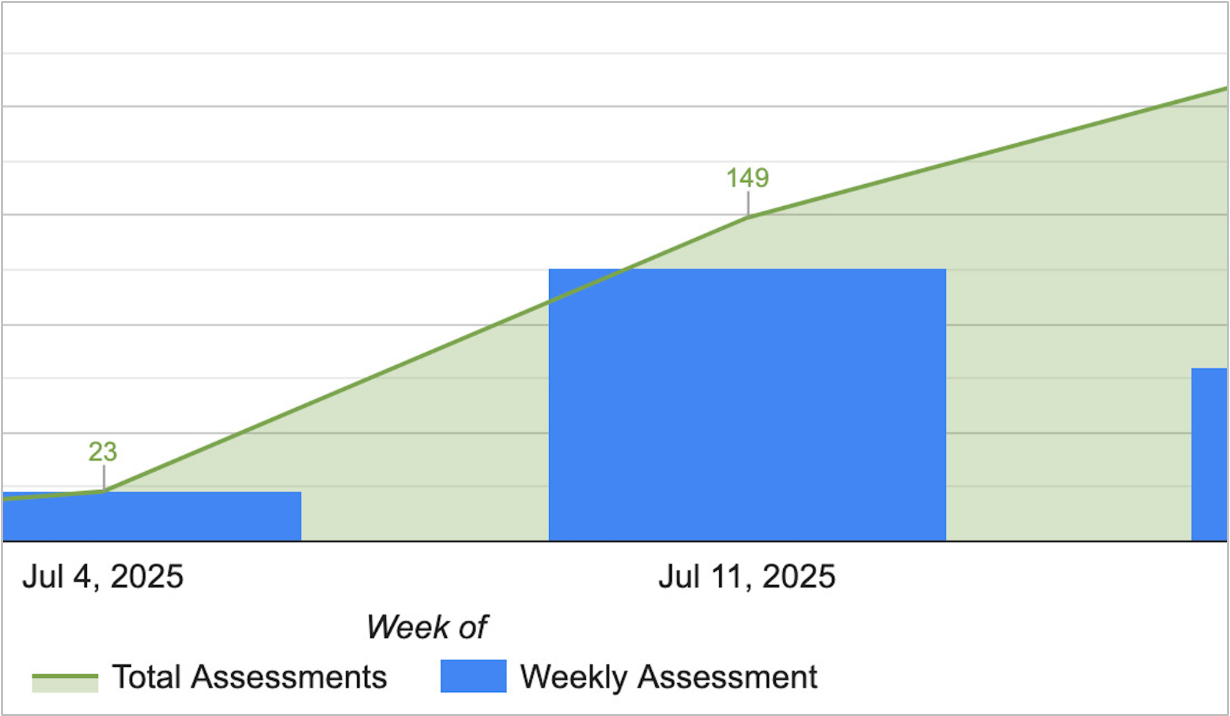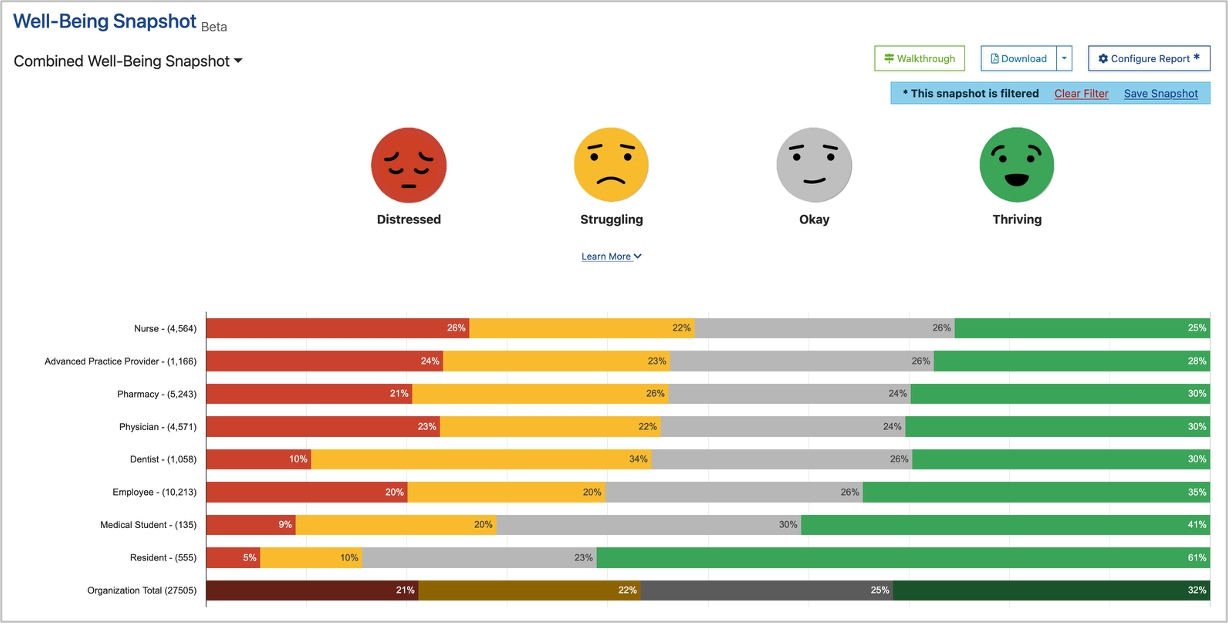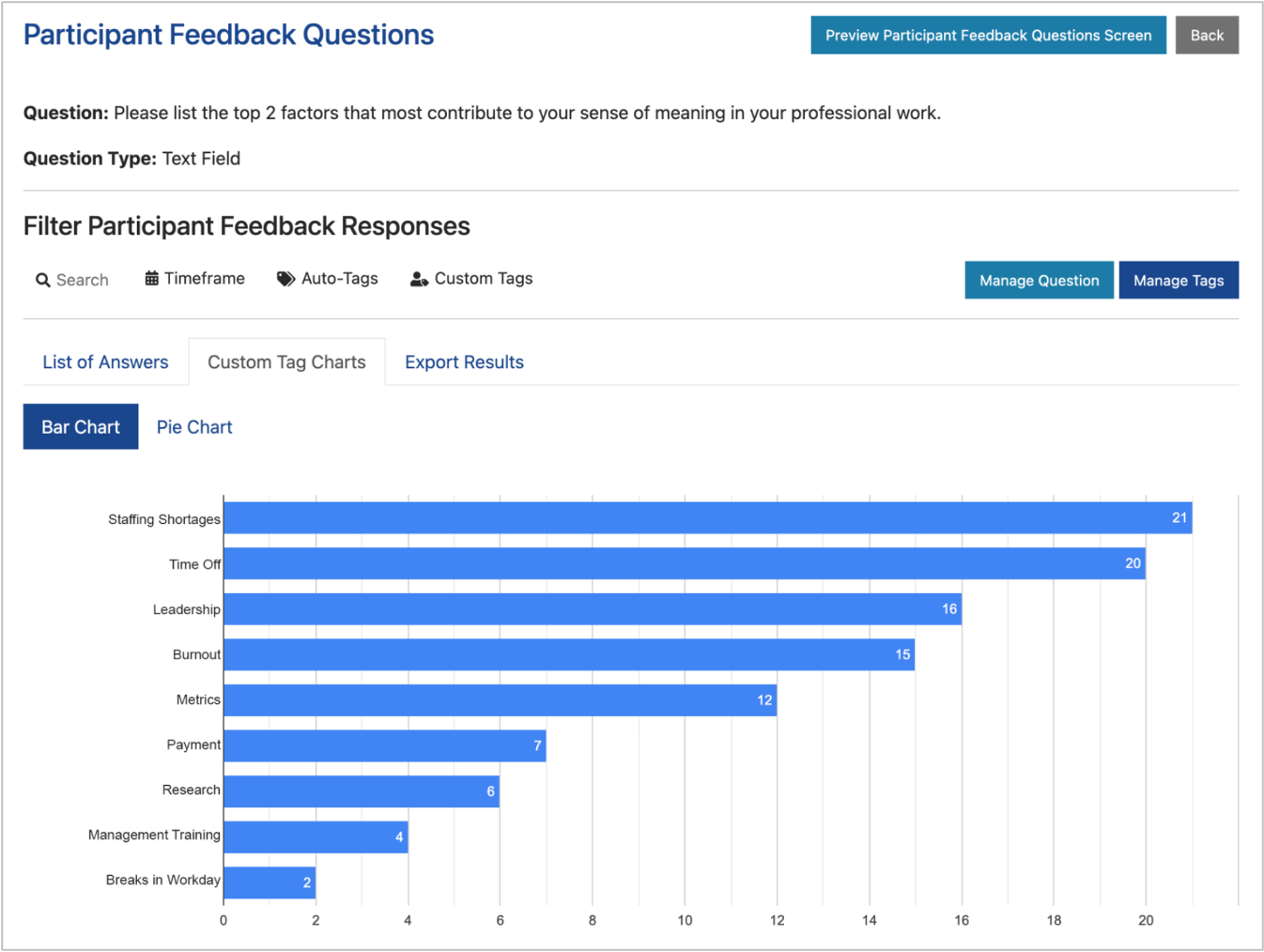Answering the 5 most commonly asked questions by healthcare leaders.

Patrick McNally is a Well-Being Index Expert who has partnered with hospital systems, associations, academic medical centers, and more to help create buy-in for leadership teams to utilize the Well-Being Index as a must-have tool for determining stress levels and providing resources for participants.
As we are all still working to overcome the COVID-19 pandemic, healthcare organizations are dealing with an epidemic that has been recognized and studied for nearly 2 decades: clinician distress and burnout. Here, I will explore the five most common questions I receive on a daily basis when talking with organizational leaders about investing in clinician well-being:
1. Why change (does anything work)?
3. Why is integrating assessment critical?
5. Why spend the money (is it worth it)?
#1: Why change (does anything work)?
We know from research that between 30-50% of clinicians experience at least one symptom of burnout. In recent years, significant work has been done in the area of well-being and it is showing positive results. However, for those organizations that have not invested in well-being, the problem of distress will not solve itself by maintaining the status quo.
Unfortunately, one sentiment I often hear is that because clinician distress is a multi-faceted issue, it is too complex to work on or is the responsibility of the individual clinician. In a 2017 article, Bohman et. al describe physician well-being as a “three-legged stool” including the three interrelated domains of “practice efficiency, a culture of wellness, and personal resilience.” We see from this article that well-being is a shared responsibility between the organization and the individual clinicians.
As many institutions have experienced and peer-reviewed research demonstrates, clinician burnout leads to a decrease in productivity, an increase in risk for medical error, an increase in risk of turnover, a decrease in quality of patient care, and an increase in risk for suicidal ideation. Extensive research, including multiple systematic reviews, also shows that interventions to reduce burnout and improve well-being do work. Therefore, if you as an organization are not actively investing in maximizing the well-being of your staff, you are neglecting your moral, ethical, and financial obligation to serve your people well so that they can serve your patients well.
#2: Why act now?
If I have thoroughly convinced you that there is reason to change, the next question you are likely to ask is, “why now?” Healthcare organizations have been battling the COVID-19 pandemic for nearly a year, many have incurred serious financial difficulties, and they believe they simply cannot invest in well-being initiatives right now.
What we have observed over the last year shows us that it may be more important now than ever before to understand the well-being of your organization and develop the resources necessary to adequately support staff. We have already seen that COVID-19 has exacerbated the chronic issue of clinician burnout and placed specific groups of clinicians at an even greater risk of distress. We have also witnessed the worst case scenario of clinician suicide, such as the tragic death of Dr. Lorna Breen in April 2020. As the pandemic continues, studies are showing ongoing severe stress, including anxiety, depression, post traumatic stress disorder, and more.
One of our Well-Being Index partners, CommonSpirit Health, relaunched their Physician Well-Being Index in May of 2020. We had the pleasure of speaking with Dr. Keith Frey, Chief Medical Officer of CommonSpirit Health Arizona Division, who said, “we realized there’s no good time to roll out new things to physicians who are working so hard on COVID, but we needed to do something.”
We have a responsibility to protect and support the mental health and well-being of our medical staff—especially in trying times when they need it most.
#3: Why is integrating assessment critical?
So, you’re ready to make a change, and you’re ready to do it now, but where do you start? In a recent article titled “Organizational Evidence-Based and Promising Practices for Improving Clinician Well-Being,” Sinsky et al. suggest that change requires commitment and work across 6 domains: “(1) organizational commitment, (2) workforce assessment, (3) leadership (including shared accountability, distributed leadership, and the emerging role of a chief wellness officer [CWO]), (4) policy, (5) efficiency of the work environment, and (6) support.”
As described in Domain 1: Organizational Commitment, the authors emphasize the need for organizational commitment not just in words, but in attention and resource investment to improve well-being across the organization. One of the vital first steps in that investment is implementing the second domain—a workforce assessment. Effective assessment allows organizations to:
- Understand their current state of well-being
- Benchmark against other organizations to provide context to interpret the local experience
- Identify the areas of greatest need
- Prioritize limited time, attention, energy, and resources where it is needed most
- Enable assessment of the efficacy of interventions
- Track progress over time
I’ve worked with numerous organizations around the world to improve clinician well-being, and the first step is to establish a baseline measure of the health of the organization. This provides the organization and the individual with a starting point for their well-being and an objective way to measure the efficacy of subsequent wellness programs. Indeed, multiple experts have recommended assessment as the first step of organizational intervention. Ultimately, how can we improve what is not being measured?
#4: Why the Well-Being Index?
Another question I commonly ask organization leaders is what other tools they’ve used in the past, and what the results were. Many times, the answer revolves around organizational engagement or satisfaction surveys. However, these types of surveys have a number of limitations, including:
- Focus: they don’t account for the evidence that satisfaction and burnout/occupational distress are different constructs
- Frequency: they are typically administered annually or biennially
- Length: they are usually dozens to hundreds of questions long
- Feedback: they take months to compile the data and provide users with feedback
These are some of the reasons why the Well-Being Index was created. Invented by healthcare professionals and for healthcare professionals, the Well-Being Index went through a rigorous multi-step validation process followed by multiple phases of peer review and is currently available for seven distinct populations. The Well-Being Index provides users with the ability to assess their well-being in under one minute, have immediate access to a well-being score, compare that score to their peers and national averages for their occupation and specialty, and access just-in-time resources to improve their well-being.
For organizations, the Well-Being Index provides access to both quantitative and qualitative data to support data-driven decisions on what to implement and the efficacy of those programs. The Well-Being Index team features a group of dedicated individuals here to support organizations through participation planning, rollout coordination, and analysis of the current state of well-being for each organization.
#5: Why spend the money (is it worth it)?
As I discussed above, the implication of not investing in clinician well-being leads to a decrease in productivity, an increase in risk for medical error, an increase in risk of turnover, a decrease in quality of patient care, and an increase in risk for suicidal ideation. In a 2017 article, Shanafelt et al. make a strong financial and business case for investing in organizational and personal well-being programs (The Business Case for Investing in Physician Well-being). The two most common questions the article addresses are: (1) “In a time of limited resources and competing priorities, what’s the business case to address this issue?” and (2) “This is a national epidemic, what can we do about it?”
The article proceeds to discuss the business case in the following areas:
- Costs associated with turnover
- Costs associated with decreased productivity
- Effects on quality, safety, and patient satisfaction
The article shows that not only is there a moral and ethical obligation for organizations to invest in clinician well-being, there is a financial case to be made as well. The final question to ask yourself is, “what will be the cost of doing nothing?”
The ‘5 Whys’ of Investing in Clinician Well-Being
Whether you’re working to create buy-in and organizational support or you’re searching for the best tool to implement immediately to start supporting your staff, the Well-Being Index team is here to help. I sincerely hope that this article provided you with valuable insights on the 5 primary questions regarding why to invest in clinician well-being:
- Why change (does anything work)?
- Why act now?
- Why is integrating assessment critical?
- Why the Well-Being Index?
- Why spend the money (is it worth it)?
Our team of Well-Being Index Experts is ready to serve you and help your organization get started on the path to well-being. Schedule a one-on-one meeting now to learn how we can Go Beyond Burnout together.







